

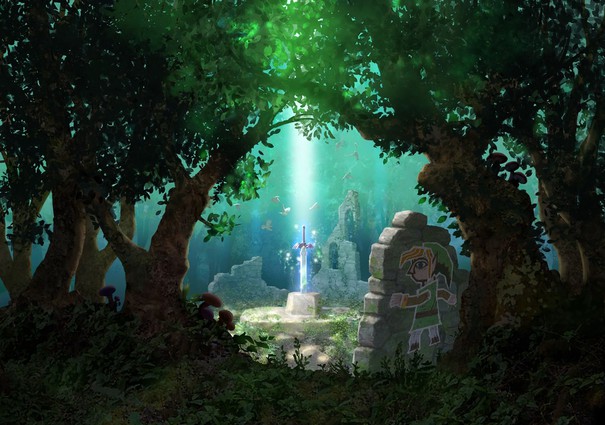
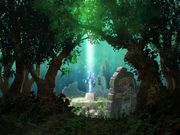
There's always bound to be a lot of eyebrow-raising when insinuating that a new Zelda deserves its place among the franchise's best. Aside from the series holding a special place in many people's hearts, you're instantly throwing it in the ring with games such as Ocarina of Time, A Link To The Past, and Link's Awakening. Not bad company to keep...
There's a reason these titles are still talked about with the kind of admiration usually reserved for friends or family members (unless that family member was your brother and he decided to delete your Zelda saved game as some ridiculous form of revenge*). They've impacted people throughout the years, that famous N64 offering still residing as many people's favourite game in history. Given what else has come out since it was released in 1998, it's a terrific compliment.
So, what is it that means A Link Between Worlds deserves to be mentioned in the same sentence? While I'm not saying it'll definitely rock the world's foundations as these other games did - only time and hindsight know for sure - how it takes what is expected from Zelda and makes them its own is nothing short of excellent.
The best example of this? The dungeons. A fair criticism of recent times has been Zelda's reliance on similar puzzles, often resulting in many of these caverns lacking the individuality that had been so present in other iterations. If nothing else, the obsession with pushing blocks was becoming somewhat obvious.
Here, such criticisms take a backseat as Nintendo ensures every dungeon has both a unique feel and twist. Yes, it still falls into the realm of needing a specific item to complete it, but the way in which it gets you to use said items is both intelligent and delightful. A single room can leave you feeling utterly perplexed, but when the pieces start to fall together you'll wonder how you didn't see it sooner, while also asking yourself how Anouma and friends came up with it in the first place.
This idea carries on where the use of 3D is concerned, too. While many games have opted just to use it to increase the depth of field visually, ALBW actively toys with it to shake up certain parts of the experience. Be it having to judge moving platforms that lurk miles below your current standpoint up Death Mountain, or jumping up to the ceiling courtesy of springs in the Tower of Hera, the extra dimension has allowed Nintendo to introduce concepts that wouldn't have been possible otherwise. It would lose something if it were to ever appear on a console incapable of recreating the effect.
Naturally when you think of dungeons, though, you think of bosses. A mix of old and new, they manage to stick to a formula many will recognise - which seems to be intentionally done in order to make the most of nostalgia - while also playing around with the norm. One particular boss - which I won't spoil as it'd be criminally unfair - ticks all the boxes you'd assume. To allow ALBW to stamp itself on the franchise as a whole, however, it throws multiple curveballs at you that aren't always simple to work out. There is, if you can believe it, a degree of thought needed to find the solution before events return to a familiar pattern.
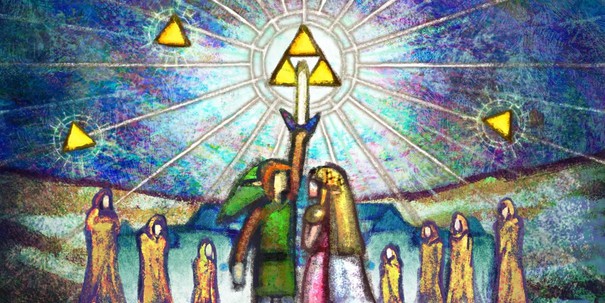
Ultimately, Nintendo deserves a tremendous amount of credit for ensuring this feels like a sequel in every sense of the word. While it has no problem referencing other games within the canon - and believe me, if you're a fan these will send you loopy - it is, first and foremost, a follow-up to A Link To The Past. That may've come out 22 years ago, but the style and art direction are directly influenced by it. If you have fond memories of the SNES masterpiece, ALBW will throw up more than a few pangs of childhood sentiment.
It's also a stern reminder that LTTP still stands up. Recognisable landmarks have been given a 2013 polish, but still have their place, and a particular iconic figure is positively terrifying, much as they were two decades ago.
Just as important to the game's success is its music. An orchestral score that harks back to themes you remember and new tunes that will get stuck in your head for a lifetime, it's an achievement all in itself. Not only does each song match its surroundings near-perfectly, it has a genuine effect on both how you play and react to your situation.
Music is often an overlooked facet of many reviews, but here it lifts the journey no end. As good as this Zelda is, it reaches the heights it does because of its soundtrack. Everything about ALBW's production screams that it wants to aim higher than mediocrity. The terrific score is just another, and imperative, piece of evidence to justify this.
Such trends continue, too, with the always intriguing side-quests and mini-games Zelda hides within the wilderness - ALBW contains one that could be my favourite from the entire series: players have 30 seconds to find as many rupees as possible, the catch being you have to keep time in your head. You'll also stumble across such gems as an activity that can only be described as baseball, the classic 'letter in a bottle' fetch quest, the truly awesome treasure caves, and a rather lovely collectable mission featuring Maiamai. It must be said there are less here than what we've been treated to in the past, but there's still more than enough to enjoy.
Of course, the serious change to the Zelda formula this year comes in the shape of your inventory. With items now being rented or bought from the friendly Ravio, you're no longer forced on a set path. Should you want to follow your instincts, or simply get stuck on a particular dungeon, you can take the power into your own hands and go and try something different altogether. Each different area requires a certain amount of deduction - you can't just stroll in with a smile etched on your face - and if you're a hardened Zelda fan, such as myself, you may even have the odd moment where you're convinced you need an item not available from Ravio to enter new territory.
While there are certain trinkets reserved for the depths of a dungeon, nearly all areas within Hyrule and its dark world equivalent - Lorule - are accessible in some form with tools that are readily available. You've just got to figure out how to go about getting it.
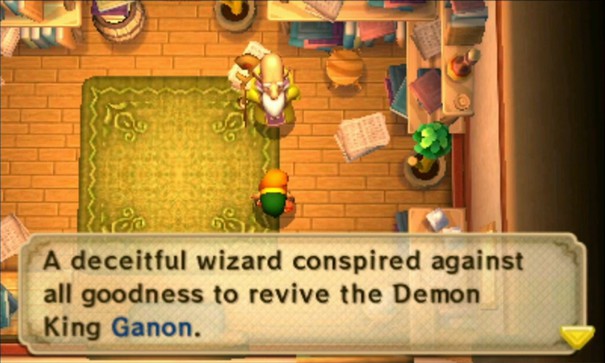
It's an interesting addition, and the way it impacts dying - your rented items return to Ravio should you fall - means that running out of hearts is now far more terrifying than it ever has been. Realising that schlepping around the map after every death to recover your lost goods would be rather tedious, a fast-travel system has been put in place; the real joy of the mechanic is the aforementioned exploration, mind. Whether or not it's something Nintendo should stick with for future outings I'm still not sure. I warmed to the concept as the hours passed, but did miss the thrill of not knowing what every locked chest may hold. There's scope to continue and tinker with both.
For many, though, the real appeal will be in how open it leaves the game. If you die during a dungeon playthrough, the fact your items get returned to Ravio means you can head off in a completely new direction rather than return to where you fell. ALBW never resets your progress at any point, leaving you to wander around as you see fit. You're never pressured into a corridor-like situation.
An element I'd be sad not to see return or used in future games is the merge mechanic. While on paper it seemed like a small folly for Nintendo to undertake, the way it's been implemented is nothing short of fantastic. Aside from somehow managing to constantly slip your mind - often when a solution to a puzzle is 'use the wall power' it'll be the last thing you try - it's constantly used in inventive and entertaining ways. In addition to expanding dungeons as you try and see where certain walls lead, it comes into play during boss battles, exploration, crossing between the light and dark worlds, and nearly every area of the entire game. Nintendo has woven it in with precision and care.
It's worth nothing the hardcore amongst you may not find ALBW particularly hard, but there's certainly a challenge at specific points throughout, a couple of bosses in particular posing a firm test. For anyone who needs a tougher kick up the ass, though, Zelda 3DS offers 'Hero Mode'. Unlocked after you've finished the game once, it increases the difficulty a fair whack. Given how good the game is, I'd imagine most will want to, if nothing else, give this a go.
The likes of Phantom Hourglass, Spirit Tracks and The Minish Cap - all Zelda handheld games that never really jumped out and grabbed you - were decent in their own right, but ALBW sits above them. Not just a worthy successor to what many consider the best entry in the entire franchise, but an excellent title in its own right.
My game of the year? Unquestionably.
*This genuinely happened to me on Link's Awakening and I have never, nor will I ever forgive my brother for this act of tyranny.
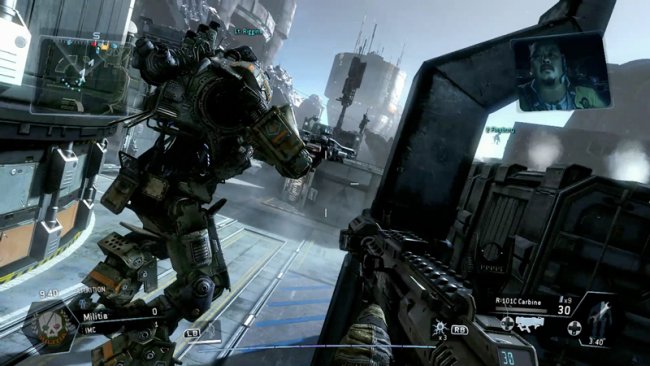
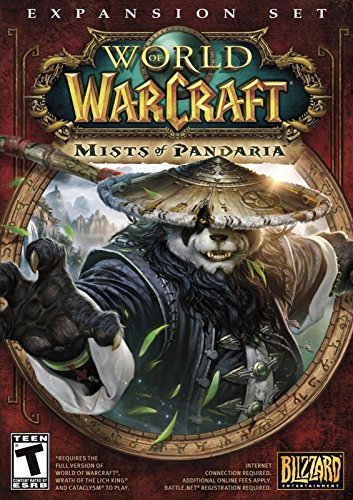
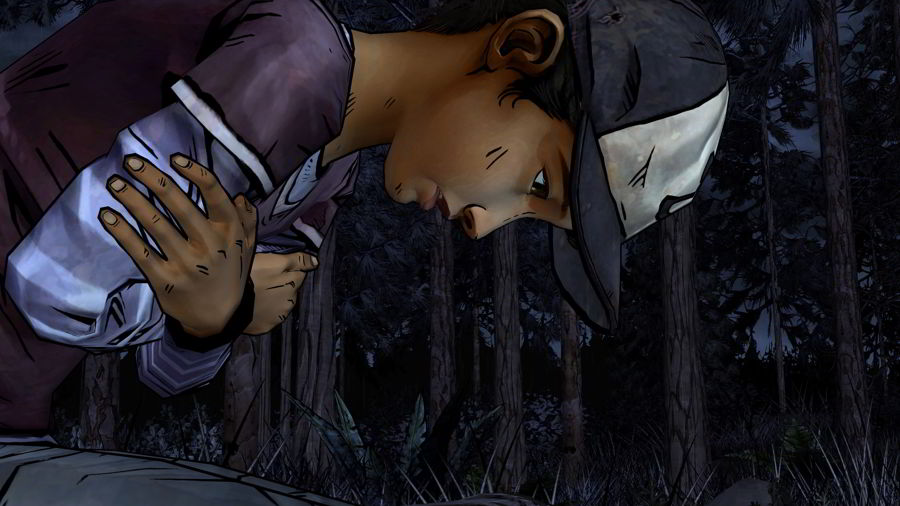

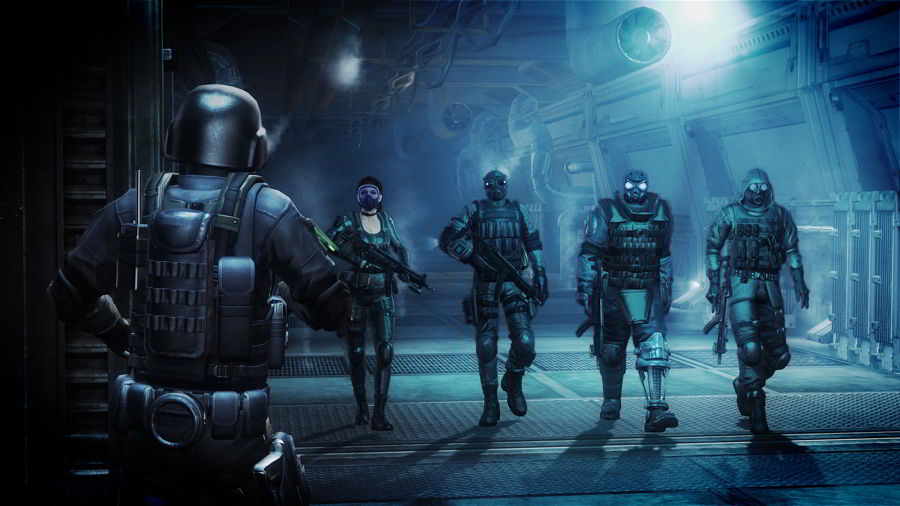 Resident Evil Operation Raccoon City Intel & Data Location Walkthrough Guide
Resident Evil Operation Raccoon City Intel & Data Location Walkthrough Guide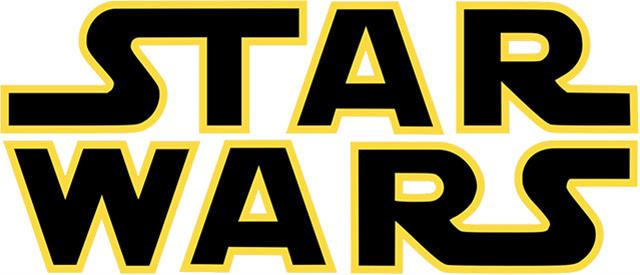 The cancelled Star Wars games we still want to play
The cancelled Star Wars games we still want to play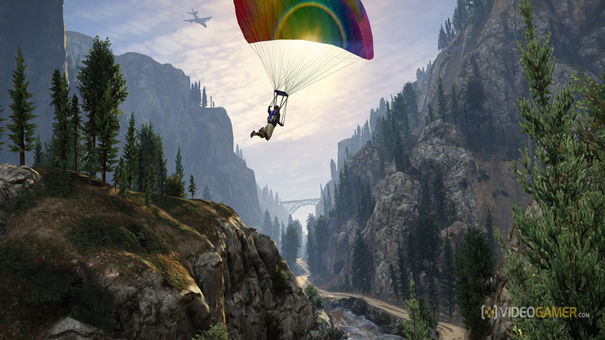 GTA 5: 11 Little Things You Need To Know
GTA 5: 11 Little Things You Need To Know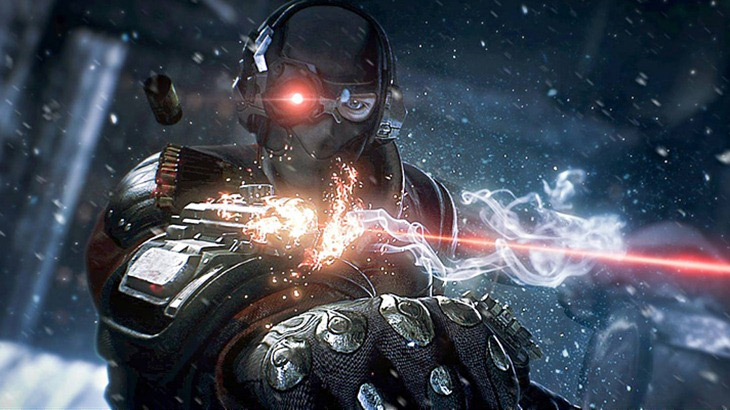 Batman: Arkham Origins – Deadshot Guide
Batman: Arkham Origins – Deadshot Guide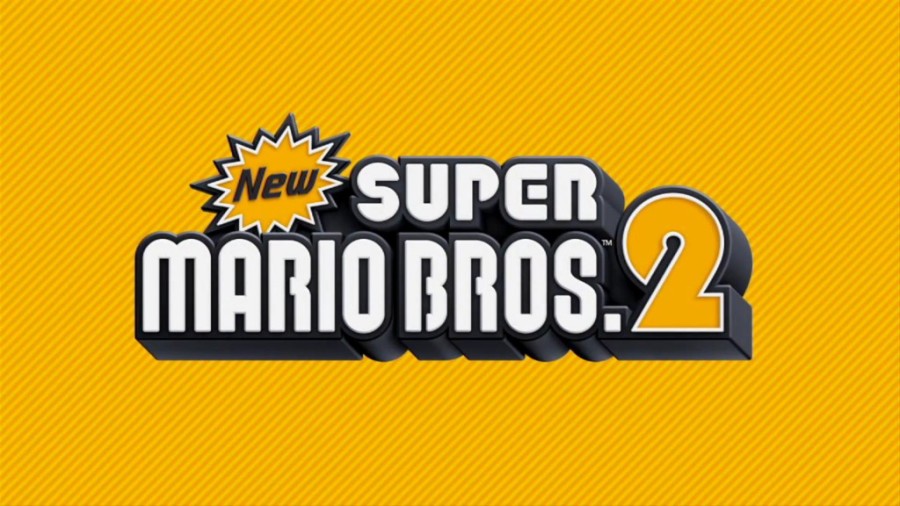 How To Play As Luigi In New Super Mario Bros 2 - GamersHeroes
How To Play As Luigi In New Super Mario Bros 2 - GamersHeroes